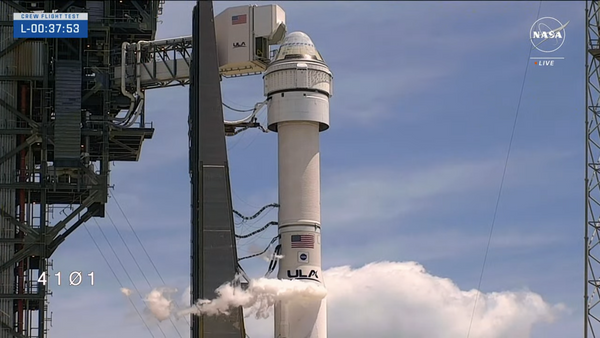
Astronomers have discovered a new Earth-sized planet orbiting a small, cool star that is expected to shine for 100 times longer than the sun.
The rocky world, called Speculoos-3b, is 55 light years from Earth and was detected as it passed in front of its host star, an ultra-cool red dwarf that is half as hot as the sun and 100 times less luminous.
The newly discovered world, described as “practically the same size as our planet”, swings around the red dwarf once every 17 hours, making a year on the planet shorter than a single Earth day.
But while the years are short on Speculoos-3b, the days and nights are never-ending. “We believe that the planet rotates synchronously, so that the same side, called the day side, always faces the star, just like the moon does for the Earth. On the other hand, the night side would be locked in endless darkness,” said Michaël Gillon, an astronomer at the University of Liège in Belgium and lead author on the study.
It is only the second planetary system to be discovered around such a star, after the detection of seven rocky worlds around Trappist-1, another cool red dwarf star 40 light years from Earth.
Researchers spotted the planet as it wandered across the face of its star causing a dimming in the starlight. The transit was detected by the Speculoos (Search for Planets EClipsing ULtra-cOOl Stars) global network of robotic telescopes.
Ultra-cool red dwarf stars make up about 70% of the stars in our galaxy and survive for about 100bn years, making them contenders to be the last stars left shining in the universe. Because they are so faint and scattered across the sky, astronomers have to observe them over several weeks to detect planets crossing in front of them.
The long lifespan of the red dwarf stars means planets orbiting them may be warm enough for long enough for life to emerge. But in the case of Speculoos-3b, any life would face an extremely harsh environment. The planet’s tight orbit means it is bombarded with radiation, receiving almost 16 times more energy per second than Earth.
“In such an environment, the presence of an atmosphere around the planet is highly unlikely,” said Julien de Wit, a planetary scientist at MIT and co-director of the Speculoos Northern Observatory and its Artemis telescope.
Details are published in Nature Astronomy.







